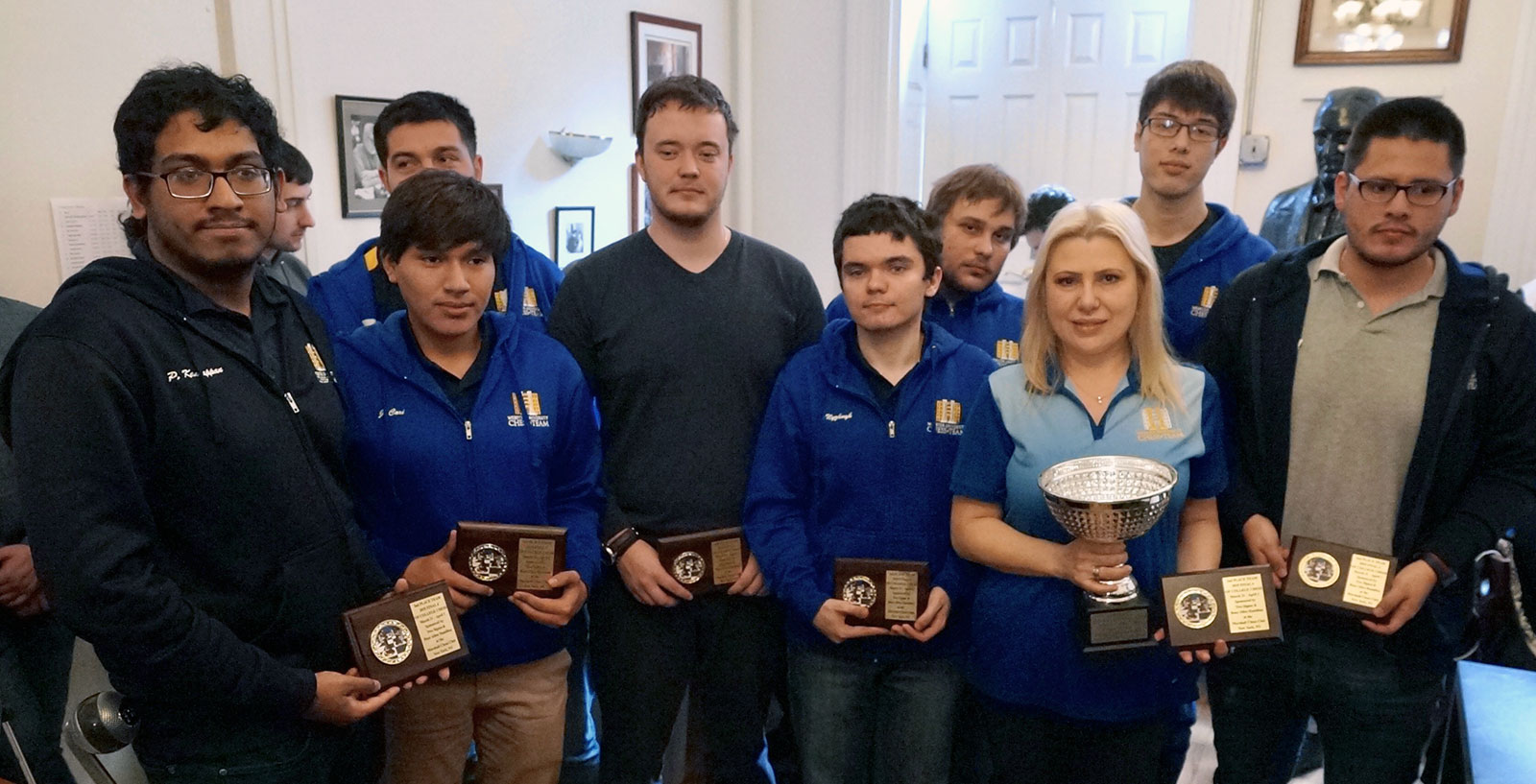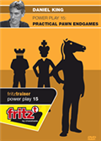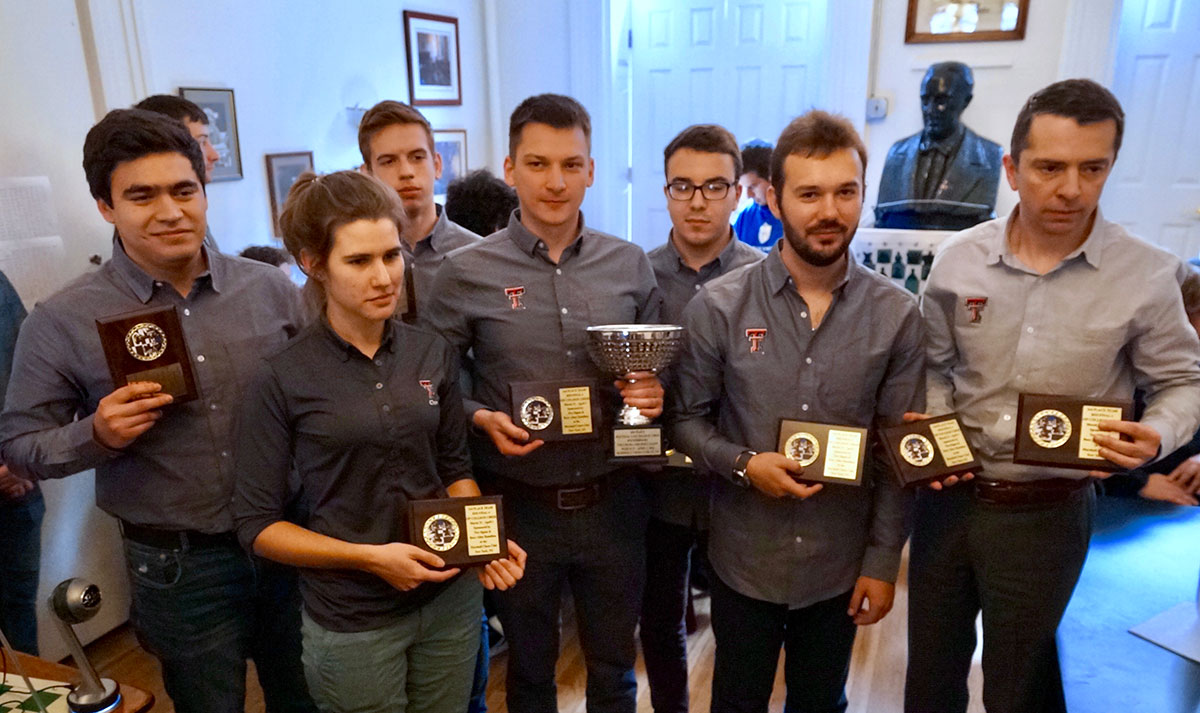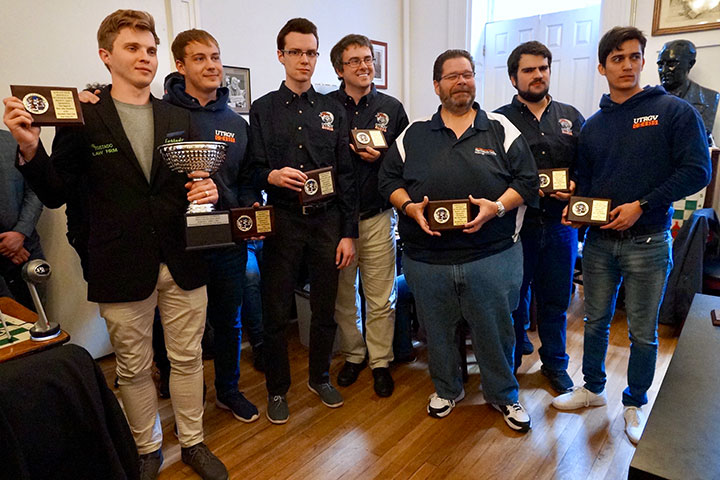UTRGV in the groove
Four powerhouse collegiate chess teams battled to show who is the top dog of the United States college chess scene (in order of rating): 1) Webster University (WU) 2) Saint Louis University (SLU) 3) University of Texas at Rio Grande Valley (UTRGV) 4) Texas Tech University (TTU). The rating average between the top-ranked Webster and the last ranked TTU teams was less than 75 points, which shows how close the competition was in this year's contest.
As this is a round-robin format event with only three matches, organizers used game points instead of match points commonly used in team tournaments. The game points force teams to take risks far more than in a regular team event, as a 4-0 or 3-1 can swing a team’s fortune in a single round.
So in terms of match strategy, it is not about just being solid but, equally important, teams must have a hint of aggression in their lineup so that they can score heavily.
As the games kicked off on March 31st, Webster was pitted against TTU, with Webster veteran Ray Robson — now 23 years old — playing a beautiful game to ensure a win for his team.
 For self-evaluation and as a learning and teaching tool
For self-evaluation and as a learning and teaching tool
Team Webster (L to R): Priyadharshan Kannappan, Jorge Cori, Vasif Durarbayli, Alexandr Shimanov, Illia Nyzhnyk, Peter Prohaszka, Susan Polgar (coach), Ray Robson, Emilio Cordova | Photo: Paul Truong
In the matchup between SLU vs. UTRGV, UTRGV employed a surprise strategy of fielding GM Vladimir Belous, who played third board for them in the Pan-American Collegiate a few months ago, on board one. Belous and the newest recruit of UTRGV GM Hovhannes Gabuzyan scored wins to power their team to lead after Round 1. In the game of Gabuzyan, we learn how it is important to be objective on a chess board, and not become greedy!
Click or tap the second game in the list to switch
In this DVD, Sam Collins examines the Isolated Queen's Pawn (IQP) and associated structures. Using games almost exclusively from grandmaster praxis in the last two years, Collins explains all of the major ideas for playing with and against the IQP.
Round two pitted UTRGV against Webster and TTU vs. SLU. Webster needed to win this badly to defend their title for the sixth time in a row, and the primary goal of UTRGV was to defend their half point lead, going into last round. This round provided the most drama in my opinion and is the round when I felt the need to note down the details of the nearest hospital, as there was so much excitement, and sadness interchangeably within seconds — there was literally no moment of the round to have a smooth heartbeat.
Two hours into the game, the following position was on the 1st board matchup between Belous vs. Shimanov:
Endings with rook and minor piece against rook and minor piece occur very frequently, even more often than rook endings, yet there's not much literature on them. This endgame DVD fills this gap. The four different material constellations rook and knight vs rook and knight, rooks and opposite coloured (and same coloured ) bishops and rook and bishop vs rook and knight are dealt with. In view of the different material constellations Karsten Mueller explains many guidelines like e.g. "With knights even a small initiative weighs heavily".
After all that drama on the top board, there was still more to follow on boards three and four, where Ray Robson and Jorge Cori of the Webster Team managed to defeat Kamil Dragun, and Hevia Alejandro of UTRGV respectively.
In the other match, TTU scored 2½ to defeat SLU, which was a bit of shocker for everyone as SLU with such a formidable lineup of Ipatov, Swiercz, Zherebukh, Rambaldi, and Ali Marandi had managed to score only 3½ game points out of eight possible games.
As all the teams headed to the April Fool's Day final round, it was clear that Webster and UTRGV were the ones with the best chance to win the title, even though TTU and UTRGV still had mathematical chances.
Webster changed their strategy going into this round against their city rivals from St. Louis, and brought in Peter Prohaszka for the first time on board three to hold the fort against Yaroslav Zherebukh, and Shimanov was rested after his bad game against Belous.
On the other end, UTRGV was going all out against TTU, as they brought in their first-round star Gabuzyan back on board four, after resting him in round two.
The 7th volume of this endgame series deals with many different aspects of endgame play: the art of pawn play, weaknesses, converting an advantage, stalemate, fortresses, the art of defence and typical mistakes. Learn how to convert an extra piece or an exchange or how to exploit space advantage and better mobility. The themes the art or defence, fortress and stalemate are also intertwined. If your position has a solid fundament then you may surprisingly reach a fortress which might even be based on a stalemate.
The bigger question was how motivated TTU and SLU were going into the final round, with very little chances for the tournament victory.

SLU team (L to R): Alexander Ipatov, Francesco Rambaldi, Dariusz Swiercz, Alejandro Ramirez (coach), Yaroslav Zherebukh, Ali Marandi, Cemil Can (obscured), Dorsa Derakhshani, Nigina Aripova | Photo: Paul Truong
An hour into the game, it was apparent that SLU was very determined to give their best and stop the Webster juggernaut from winning the President’s cup for the 6th time in a row. Ipatov had a better position against Durarbayli, Swiercz had managed to get an excellent anti berlin position with the black pieces against Ray Robson, Zherebukh was pushing against Prohaszka, and the only issue SLU had was on board four, where Rambaldi was getting busted due to deadly home preparation by Cori.
UTRGV trailing Webster by ½ a point going into the final round, managed to score three points, as their stars from round one, Belous and Gabuzyan delivered a spectacular performance once again and that pushed their team score to 7½ game points.
On the other hand, Webster lost on board one, Prohaszka managed to save a difficult endgame on board three, and Cori won his game quickly, which means Webster was with 6½ game points, with one game to go, and that was Robson vs. Swiercz. Let’s join the game as a spectator on the move 73, when both players were playing on only their 30-second increment, and Robson knew that he had to win to ensure his team continues its title streak.
 Based on his own playing experience, Grandmaster Daniel King reveals what is essential knowledge, saving you time in your studies. In the first section of the DVD he takes you through typical motifs and themes. In the second section he tests your knowledge with typical scenarios from actual games.
Based on his own playing experience, Grandmaster Daniel King reveals what is essential knowledge, saving you time in your studies. In the first section of the DVD he takes you through typical motifs and themes. In the second section he tests your knowledge with typical scenarios from actual games.
Video: 4 hours.After all the chaos, The President’s Cup was taken to its new home by the University of Texas at Rio Grande Valley. Special shoutouts to their star performers GM Vladimir Belous and GM Hovhannes Gabuzyan who scored combined five-game points out of their total 7½ points.
As they say, nothing is permanent, and the five-time consecutive national champion team, Webster University, had to settle for the second spot. The MVPs of the Webster team were Ray Robson and Jorge Cori as they scored a combined five game-points out of their team’s total seven points.
Texas Tech University finished with five game points, and that was a pretty strong finish for them, as they had only two grandmasters in their team.

TTU team (L to R): Luis Carlos Torres Rosas, Iryna Andrenko, Evgeny Shtembuliak, Andrii Baryshpolets, Pavlo Vorontsov, Sergei Matsenko, Alex Onischuk (coach) | Photo: Paul Truong
St. Louis University ended up with 4½ game points, which should have certainly been a disappointment for the team, as they were considered one of the favourites to win the title this year.
Having followed collegiate chess for six years now, I must say this was the most dramatic Final Four in the recent times, and the excitement levels are bound to only go up in the coming years, as players graduate and teams are continuously recruiting strong grandmasters from around the world. A big congratulations to the players and coach GM Bartlomiej Macieja of UTRGV, for their excellent teamwork and strategy to win their first ever President’s Cup.
Links


























